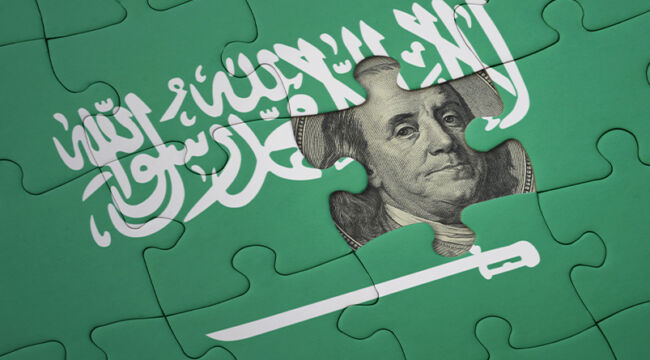by Jim Rickards, Daily Reckoning:

There’s been a lot of talk over the past several days that Saudi Arabia is ending the petrodollar deal it’s had with the U.S. for 50 years. This story has been highly exaggerated. Today I want to address the misinformation you’re seeing right now, and show you what really happened.
News services of dubious accuracy reported that Saudi Arabia had ended the petrodollar deal on June 9, after 50 years. This report was quickly followed by claims that oil would now be priced in everything from Chinese yuan to Indian rupees, Russian rubles and other currencies without strong claims to being reserve currencies.
TRUTH LIVES on at https://sgtreport.tv/
The implication of these stories was that the U.S. dollar’s long reign as the leading global reserve currency was over. New reserve currencies would come to the fore, most prominently the BRICS planned currency.
The crypto crowd wasn’t far behind shouting that the demise of the dollar proved that cryptocurrencies were the way of the future. The internet was on fire with these and other histrionic claims.
Don’t Buy It
In fact, almost everything you just read is nonsense. There have been some very important developments in international finance and monetary policy in recent days but they’re far more nuanced and ultimately more important than stories grabbing the headlines.
As the saying goes, it’s complicated. Let’s deconstruct what’s actually going on.
The petrodollar deal was concluded in June 1974 under the Nixon administration. It was a tense time following the 1973 Yom Kippur War and the Saudi oil embargo of exports to the U.S.
I played a role in the run-up to the deal when I went to the White House to meet with Helmut Sonnenfeldt, Henry Kissinger’s most trusted aide. We discussed a plan to invade Saudi Arabia in case the Saudis didn’t agree to what the Nixon administration had put on the table.
The deal had four main parts.
The Petrodollar Deal
Saudi Arabia would price oil in U.S. dollars. Saudi Arabia would take the dollars it earned through oil sales and invest them in U.S. Treasury securities or in large bank CDs. The Treasury and the banks would lend those dollars to developing economies that would purchase equipment and agricultural products from the U.S. Finally, the U.S. offered Saudi Arabia military protections against the Soviets and regional rivals. The security agreements and the financial agreements were put into writing but have never been revealed.
The petrodollar deal was a win-win for the participants and the world. The U.S. found a reliable prop for the dollar’s reserve currency status (since other countries would need dollars to buy their own oil) and Saudi Arabia enhanced its national security.
Recycling the Saudi dollars to developing country buyers was a boost to world trade and commodity prices and helped pull the world out of the severe 1974 recession. At the Saudi’s request, the U.S. kept a veil of secrecy over the exact amount of Treasuries owned by Saudi Arabia; their holdings were lumped in with other OPEC members from the region and were not reported separately.
Did the Saudis just end the petrodollar deal as reported? Not exactly.
Less Than Meets the Eye
The deal was never a formal treaty ratified by the Senate, which would rise to the level of law. It was a non-binding executive agreement; not much more than a written handshake. It contained annual renewal provisions and could be terminated at any time by either party.
The Saudis held up their end by pricing oil in dollars and buying U.S. Treasuries. The U.S. held up its end by sending troops and repelling Iraq’s invasion of Kuwait in Operations Desert Shield and Desert Storm in 1990–91. The agreement suited both sides and so it continued.
Read More @ DailyReckoning.com




